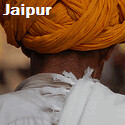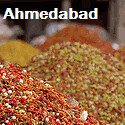
As most of you know, I'm an American. To be more specific, I'm a 29 year old male, raised in an upper middle class suburb, who traded in his 19th floor condo in Chicago's River North neighborhood to move to India about a year ago.
Full Disclosure: I moved as an expat with my company & have been sheltered even here. I'm not living the Peace Corps lifestyle or anything.
The town I grew up in provided a wonderful childhood, but definitely left me (and many others) sheltered.
It was the sort of place where as a child you met your friends for coffee at Starbucks... Before there was a Starbucks on any corner. In fact, you could almost classify a suburb's ability to shelter children based on when the first Starbucks arrived. We got ours in 1991.
Perhaps that is where my perception of the worth of a dollar started. After all, if a dollar didn't even buy you a cup of coffee as a tween - imagine my perception of it's worth at 29.
That all changed in India. In Delhi, a dollar (let's say 50 rupees) can buy you more than you could possibly imagine. In fact, I've quietly been making a list of things one could buy for a dollar here in Delhi. Ironically, a cup of coffee isn't one of them (at least not a cup from Coffee Bean & Tea Leaf - the closest thing to a Starbucks here in Delhi).
- 50 minutes of mobile to mobile calling (vodafone pre-paid)
- 6 days of satellite TV (Including HBO, StarWorld, CNN, etc)
- 9 pounds of Onion (@12 INR a kilo)
- 1.4 personal pizzas from Dominos (starting 35INR)
- 5.5 miles in an auto rickshaw (Delhi Rates)
- 7 (update 16) pressed shirts from neighborhood press wala
- 3.5 loafs of bread
- 1/2 pound chicken or Bangalore Beef from high end shop
- 4 bottles of premium bottled water
- 16 issues of Hindustan Times (INR 3 per issue)
I could go on and on - in fact, I encourage my Indian followers to do so. Tell me, what is 50 rupees worth in your life?
I am not naive, a dollar can't possible buy you the same amount of goods in the United States. I do understand the economies of producing products in these markets are very different. I'm simply illustrating how the perception of a dollar's worth, when seen in the broader context, can change your life.
I can assure you that when I visit Chicago next week, my new value of a dollar will certainly play a role in my consumer behavior. This time I'll pass on my triple grande non-fat latte at 200 rupees. Instead, I'll buy 36 pounds of onion upon my return.
This post is part of a 30 part series called 30 Things:
June 4th is my 1 year anniversary of living in India. I'm taking a few moments each day to reflect on the year, piece together my thoughts on living here as a quiet observer of Delhi lifestyle. I can't promise this will be the most profound list of things I've learned about myself, India, or life - but it is sure to make you smile.
So, with that, June 4, 2009 - my 366th day in India. Time to start reflecting.








